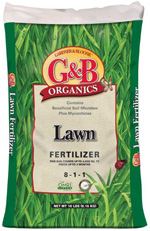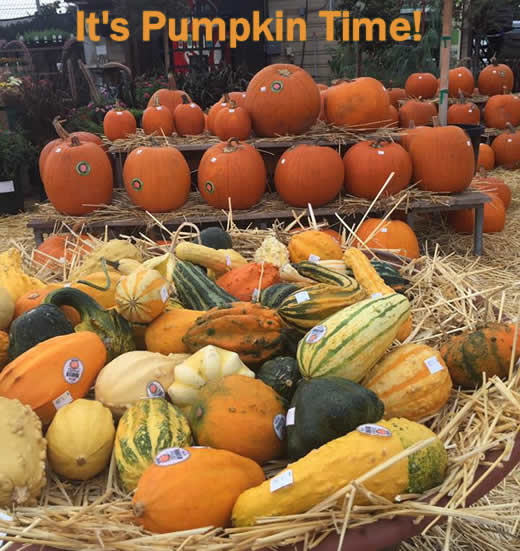|

      
|
 |
Featured Quote: "A man should never plant a garden larger than his wife can take care of." |

|

|
It's undisputed--everyone loves flowers. But flowers are not the only way to introduce vibrant beauty into the landscape. We would like to introduce you to a couple of beautiful and unique candidates to include in your flower garden this fall--ornamental cabbage and ornamental kale. Ornamental cabbage and kale are related to the cabbage and kale we eat; in a pinch, you actually could eat the ornamental types even though they are not as tender and flavorful as their culinary cousins. But what they lack in tastiness, they more than make up for in their beauty. Even though they are sometimes referred to as flowering cabbage and flowering kale, it is their leaves that provide the color. The arrangements of the leaves on both types form a flower-like rosette which lasts all through the cool season, unlike actual flowers. Only when the weather begins to warm in the spring, do they produce flowers--you will notice the plant "stretching" and a vertical flower-stalk emerging from the center. This is your signal that it is time to remove them and replace them with a warm-season annual. Because of the plant's propensity to flower and set seed when the weather is warm, it is best to wait to plant it until you can be fairly certai n that the weather has cooled off sufficiently in the fall. The color of the foliage, which ranges from a mixture of purple, rosy-lavender and white, will become more and more vibrant as the weather gets cooler. You will notice the most vibrant colors after periods of frost. You will also avoid having to deal with some of the pests common to the cabbage family (such as cabbage loopers) by postponing your planting until the weather has cooled. While ornamental cabbage and kale can grow to a height and width of about 18", it is best to purchase larger plants that are about the size you would like them to stay. The reason for this is that if they are root-bound (which they quite often are in containers) they will not grow much larger. Look for plants that are stocky and full rather than tall and narrow, with the color combinations that you like. If you select a plant that fits all your requirements but has a "trunk" before the foliage begins, simply plant it deeper, up to the first set of leaves; ornamental cabbages and kales are among a very small group of plants that will tolerate having the soil level raised along the main stem. What is the difference between ornamental cabbage and ornamental kale? The leaves of ornamental cabbage have smooth margins while ornamental kale has fringed or serrated leaves. Pick whichever plants appeal to you, using all one type or mixing them for interest. You will get the most "bang for your buck", however, if you use them in groupings or mass plantings, rather than sporadically planted throughout the flower bed or lined up like soldiers. If your flower bed has some depth to it, a great combination would be groupings of ornamental cabbage and/or ornamental kale with a foreground planting of pansies. Container planting is another great use for these colorful plants. In this instance, you can get away with using one plant as the main focal point in the pot, possibly surrounded by smaller annuals such as pansies, violas or dianthus. Whether planting them in a container or in the ground, be sure to choose a sunny location that will receive regular water with good drainage. They prefer a slightly acidic soil, rich in organic matter. Depending on the weather, ornamental cabbages and kales can last through the winter, only finally "giving up the ghost" as the weather warms in the spring. |

|

|
Street trees give us shelter from the wind, privacy from the roads, and shade from the sun--and at the same time add diversity to our yards. Without them our streets and neighborhoods would be much less attractive and comfortable. Street trees are a vital part of every town or city's infrastructure, contributing energy savings, filtering storm water runoff and enhancing property values. When planting a street tree, consider the particular site where the tree will be planted. Ask these five questions before you select and plant your tree:
Taking time to answer these questions will help prevent headaches later. Trees planted in the wrong sites will uplift sidewalks, become tangled in power lines, obstruct throughways, and become unhealthy and unattractive over the years. Matching the right tree to your particular site is the best way to guarantee its success. We stock a great selection of shade trees for most street settings along with the products you need for planting. You should check with your local planning office and ask if a permit is required before planting. Many local communities have an approved Master Street Tree Plan that you must follow. No matter what, choose a tree you will care for and appreciate and enjoy for its unique characteristics. Once planted, make maintaining your tree a top priority. Healthy trees add to the beauty of your yard and improve the quality of the environment not only for people, but also for birds and animals. As always, our staff of nursery professionals is available to help you make the right selection for your home. |
 |
|
Depending on which plant you're talking about, Morning Glory plants are either a beautiful sight, or a scourge to be eliminated. The easily controlled annual plants that are sold in garden centers are lovely, but their native cousin, commonly referred to as bindweed, is hearty, and hard to get rid of. Indgenous members of the Morning Glory family are found almost everywhere on the planet, and they are universally hard to control. Bindweed typically spreads via rhizomes, which are sections of roots that store energy and are capable of producing an entirely new plant. Spreading over the top of the ground, the plant will drop new roots into the ground wherever it touches. Unfortunately, it is very hard to dig out these new, unwanted, plants, without making the problem worse. Have you ever seen the segment in the movie Fantasia where Mickey is trying to get rid of the broom sticks? It's very much like that. Because each rhizome is capable of becoming a new plant, attempts at digging or tilling them out can just make the problem worse. The best bet is to block the sunlight from the plant, whether by using carpet, black plastic, or even sod, and then cutting out any shoots that appear from underneath before they can restock the rhizomes with more energy. You'll need to go out every week, or at least every two weeks, to pull any shoots that make it to the light. This can take up to a year, but you must remain vigilant. If you let them get sunlight, the plant will replenish the rhizomes and you will be starting over again. There are also chemical solutions that will help control bindweed. The best time to use them is in the fall. Repeated applications will probably be necessary, as the roots can be over 10' deep into the ground. Again, checking regularly will help you stay ahead of the game. Another thing to consider is that even though your eradication campaign is being successful, your neighbors could be making the problem worse by ignoring it. Discussing your project with your neighbors and working together will save you a lot of time and frustration in the long run. |
 |
|
What's the difference between a daffodil and a narcissus? Answer: There is no difference. The two words are synonyms. Narcissus is the botanical name for daffodils, just as ilex is for hollies. Daffodil is the common name for all members of the genus Narcissus, and its use is recommended by the American Daffodil Society at all times other than in scientific writing. In some parts of the country, any yellow daffodil is called a jonquil, usually incorrectly. As a rule, but not always, jonquil species and hybrids are characterized by several yellow flowers, strong scent, and rounded foliage. But who really cares? They are all lovely flowers--and we say, "Call them whatever makes you happy!" |
 |
Written content © Garden Partners LLC, or respective authors. All Rights Reserved. Privacy Policy. All written content contained in this site is protected by United States copyright law and may not be reproduced, distributed, transmitted, displayed, published, or broadcast without prior written permission of Garden Partners, LLC. You may not alter or remove any trademark, copyright or other notice from copies of the content. |


